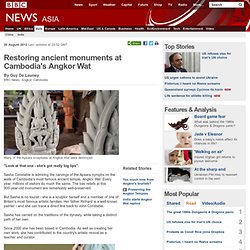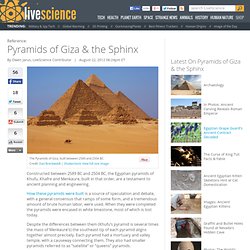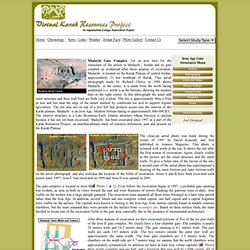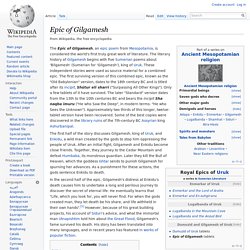

The path to enlightenment. Brian Johnston casts off at least 108 earthly desires as he wanders an ancient Buddhist trail in Shanxi Province.

In a cave in Yungang it occurs to me that my life really is pathetic. Here I am worrying about work, wrinkles and the cost of petrol. My whole life has been a parade of trivial and fleeting preoccupations, yet still I fret. The Buddha that peers from a crack in the cliff couldn't care less. His serene face, almost lost in shadow high above me, has been smiling for more than 1500 years. It's hard to linger at the feet of a gargantuan, time-worn Buddha and not feel insignificant.
This 17-metre Buddha is enough to provoke wonder, but caves at Yungang, near the city of Datong in northern China, feature 50,000 other sandstone carvings, right down to phoenixes the size of my thumb, lining a kilometre of cliff riddled with caves. Perhaps I'm supposed to be tempering my earthly desires, but this fabulous display has only whetted my appetite for more. Besides, Pingyao is special.
Restoring ancient monuments at Cambodia's Angkor Wat. 20 August 2012Last updated at 23:52 GMT By Guy De Launey BBC News, Angkor, Cambodia Many of the Apsara sculptures at Angkor Wat were destroyed "Look at that one - she's got really big lips".

Forest razing by ancient Maya worsened droughts, says study. (Phys.org) -- For six centuries, the ancient Maya flourished, with more than a hundred city-states scattered across what is now southern Mexico and northern Central America.

Then, in A.D. 695, the collapse of several cities in present day Guatemala marked the start of the Classic Maya's slow decline. Prolonged drought is thought to have played a role, but a study published this week in the journal Geophysical Research Letters adds a new twist: The Maya may have made the droughts worse by clearing away forests for cities and crops, making a naturally drying climate drier. "We're not saying deforestation explains the entire drought, but it does explain a substantial portion of the overall drying that is thought to have occurred," said the study's lead author Benjamin Cook, a climate modeler at Columbia University's Lamont-Doherty Earth Observatory and the NASA Goddard Institute for Space Studies.
Minoan villa discovered at Ierapetra, Crete. A Minoan mansion dating to 1600-1400 BC has been discovered in the mountainous area of Anatoli, Ierapetra, southeast Crete.

The building, say archaeologists taking part in the excavation, appears to be undisturbed and indications are that its occupants fled after the building's destruction without taking any of the objects that were inside. The cause of destruction and the reasons for the building's abandonment have not yet been ascertained and further details are expected to emerge with the progress of the excavation.
Numerous Minoan villas have been located and excavated elsewhere on Crete, though all are typically located in the lowlands and plains, where they are traditionally associated with farming. The building at Anatoli is the second to be excavated in Crete at such a high altitude. Pyramids of Giza & the Sphinx. Constructed between 2589 BC and 2504 BC, the Egyptian pyramids of Khufu, Khafre and Menkaure, built in that order, are a testament to ancient planning and engineering.

How these pyramids were built is a source of speculation and debate, with a general consensus that ramps of some form, and a tremendous amount of brute human labor, were used. Virtual Karak Resources Project: Historical Study. Brief History of Gate Structures.

Gates have probably been in existence since defensive walls first appeared. If walls are necessary to protect a town, a gate to protect the entrance is shortly to follow. The two developments probably coincided. In the ancient Near East, we have uncovered town gate plans dating back at least to the Early Bronze Age (3300-2200 B.C.E.), and we have a fully preserved gate complex (all but the uppermost part) from the Middle Age (ca. 1800 B.C.E.) at Tel Dan [see below]. Earlier during the Chalcolithic period (4500-3300) at Ein Gedi we have remains of a temple and temenos area with two entrances. Virtual Karak Resources Project: Historical Study. Mudaybi Gate Complex.

Earth from Space - Image Information. Epic of Gilgamesh. The Epic of Gilgamesh, an epic poem from Mesopotamia, is considered the world's first truly great work of literature.

The literary history of Gilgamesh begins with five Sumerian poems about 'Bilgamesh' (Sumerian for 'Gilgamesh'), king of Uruk. These independent stories were used as source material for a combined epic. The first surviving version of this combined epic, known as the "Old Babylonian" version, dates to the 18th century BC and is titled after its incipit, Shūtur eli sharrī ("Surpassing All Other Kings"). Only a few tablets of it have survived. Ziusudra. Ziusudra (also Zi-ud-sura and Zin-Suddu; Hellenized Xisuthros: "found long life" or "life of long days") of Shuruppak is listed in the WB-62 Sumerian king list recension as the last king of Sumer prior to the deluge.

He is subsequently recorded as the hero of the Sumerian flood epic. He is also mentioned in other ancient literature, including The Death of Gilgamesh[1] and The Poem of Early Rulers,[2] and a late version of The Instructions of Shuruppak[3] refers to Ziusudra.[4] Akkadian Atrahasis ("extremely wise") and Utnapishtim ("he found life"), as well as biblical Noah ("rest") are similar heroes of flood legends of the ancient Near East. Although each version of the flood myth has distinctive story elements, there are numerous story elements that are common to two, three, or four versions. Ziusudra[edit] Sumerian king list[edit] Sumerian flood myth[edit] A Sumerian document known as The Instructions of Shuruppak dated by Kramer to about 2500 BC, refers in a later version to Ziusudra. Don River (Russia) Biblical Artifact Proven to Be Real - Netscape News. In 1979, two tiny silver scrolls bearing the same Old Testament verse were found in a tomb near Jerusalem by Dr.

Gabriel Barkay, an archaeologist at Bar-Ilan University in Israel. Both of the scrolls were inscribed with this verse: May the Lord bless you and keep you; may the Lord cause his face to shine upon you and be gracious to you; may the Lord lift up his countenance upon you and grant you peace. The Priestly Benediction, as this scripture from Numbers 6:24-26 is often called, are spoken at the conclusion of both Christian and Jewish liturgies. And now these words have been found on those two miniature strips of silver wound like tiny scrolls, making it the earliest biblical passage ever found on ancient artifacts. It's taken 25 years, but scientists now date those scrolls from the late seventh or early sixth century B.C.--400 years older than the Dead Sea Scrolls, reports The New York Times.
Amarna letters. EA 161, letter by Aziru, leader of Amurru, (stating his case to pharaoh), one of the Amarna letters in cuneiform writing on a clay tablet. The Amarna letters (sometimes Amarna correspondence or Amarna tablets) archive, on clay tablets, mostly diplomatic correspondence between the Egyptian administration and its representatives in Canaan and Amurru during the New Kingdom. The letters were found in Upper Egypt at Amarna, the modern name for the Egyptian capital of Akhetaten (el-Amarna), founded by pharaoh Akhenaten (1350s – 1330s BC) during the Eighteenth dynasty of Egypt. The Amarna letters are unusual in Egyptological research, because they are mostly written in Akkadian cuneiform, the writing system of ancient Mesopotamia, rather than of ancient Egypt.
The letters[edit] One of the Amarna Letters (from Alashiya) Letter summary[edit] Geography of Mesopotamia. Mesopotamia. Cradle of civilization. The cradle of civilization is a term referring to locations identified as the sites of the emergence of civilization. In Western European and Middle Eastern cultures, it has frequently been applied to the Ancient Near Eastern Chalcolithic (Ubaid period, Naqada culture), especially in the Fertile Crescent (Mesopotamia and Levant) and Egypt, but also extended to sites in Asia Minor (Anatolia), Armenia[1] and the Iranian Plateau (Elam). Other civilizations arose in Asia, among cultures situated along large river valleys, notably the Indus River in the Indian Subcontinent[2] and the Yellow River in China.[3] Civilizations also arose independently in Egypt, Norte Chico in present-day Peru,[4] the Andes and in Mesoamerica.
If writing is considered an indicator of civilization, the earliest "cradle" to have writing was Sumer (Jemdet Nasr) in Mesopotamia. Scholars have defined civilization using various criteria. The use of writing is a common one. Tigris. River flowing from Turkey through Iraq and Syria. Khosr River. Nineveh. Nineveh (; Akkadian: 𒌷𒉌𒉡𒀀 URUNI.NU.A Ninua; Syriac: ܢܝܼܢܘܹܐ) was an ancient Assyrian city of Upper Mesopotamia, located on the outskirts of Mosul in modern-day northern Iraq.
Maya peoples. The Maya people constitute a diverse range of Native Americans in southern Mexico and northern Central America. Genesis flood narrative. Skanda Purana. Garuda Purana. Puranas. Origins[edit] Mesoamerican flood myths. Flood myth. Ancient Mediterranean flood mystery solved. Lake Bonneville. Outburst flood. Zanclean flood. Black Sea deluge hypothesis. Old World. Homo habilis. Acheulean. File:Biface Cintegabelle MHNT PRE 2009.0.201.1 V2.jpg. Arizona man finds what he believes are ancient artifacts. J. Paul Getty Museum, Getty Villa Presents 'The Last Days of Pompeii: Decadence, Apocalypse, Resurrection' (PHOTOS)
The Phoenician Alphabet and Language. Ancient stones revealed on tapestry. ARCHAEOLOGY - Mysterious tablet’s secrets revealed. Mayan theater, used by elite characters of Mayan society approximately 1,200 years ago, discovered. Machu Picchu: Facts & History. Seven wonders of the world: Petra, a desert paradise.